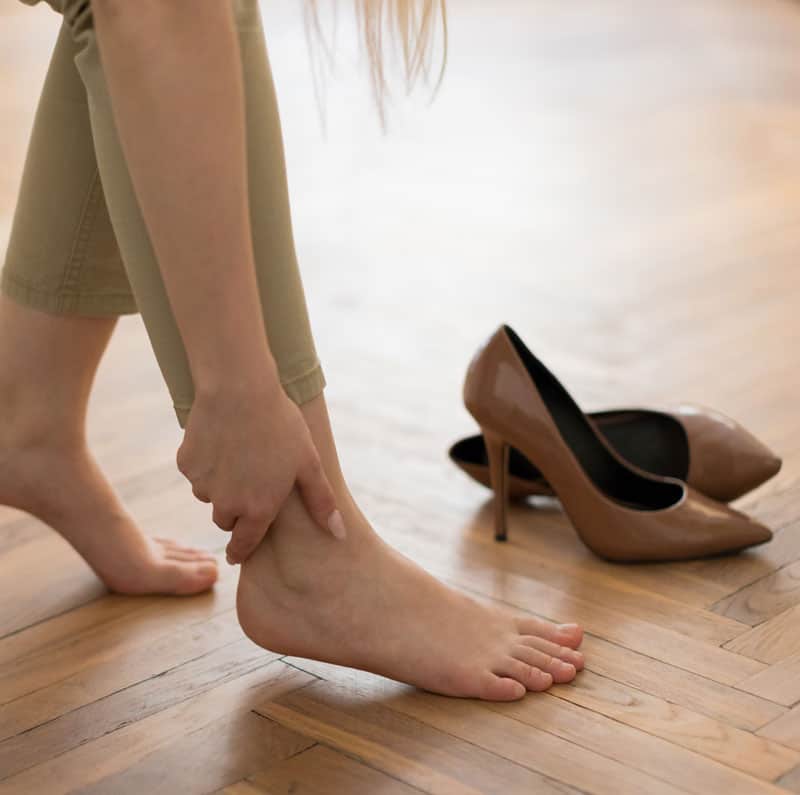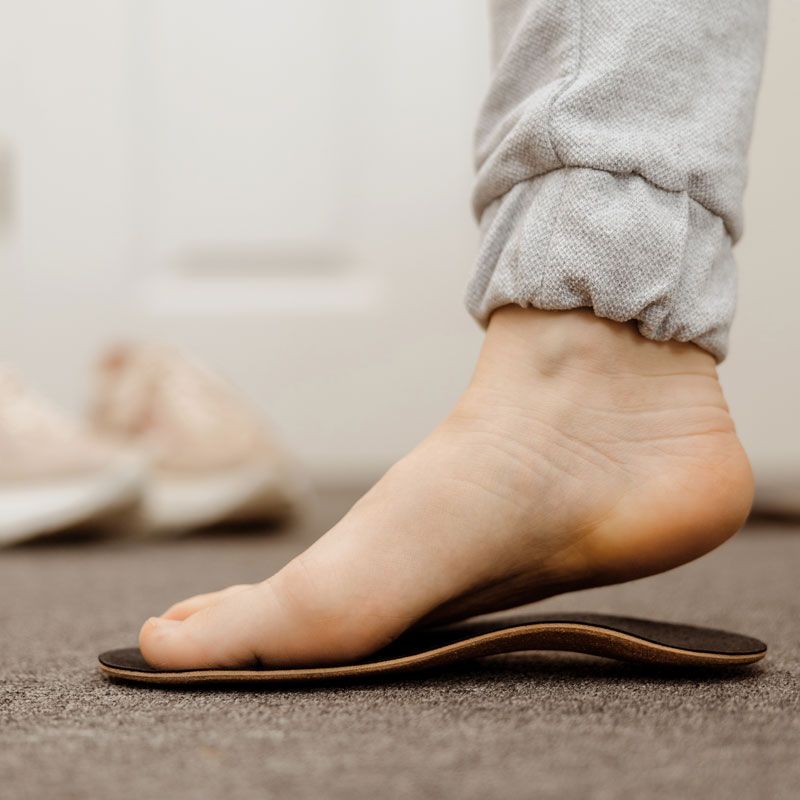The most common cause of heel or arch pain is actually caused by a painful stretching or micro-tearing of the plantar fascia. The plantar fascia is a fibrous or tendon-like structure that courses along the bottom of the foot connecting the toes and calcaneus or heel bone. During normal conditions, the fascia is flexible and strong. However due to factors such as abnormal stress, excessive weight, age, or improper foot support, the fascia can become weakened, irritated or inflamed. If the foot flattens excessively or becomes unstable at critical times during the gait cycle, the attachment of the plantar fascia onto the calcaneus may begin to stretch and pull away from the calcaneus. This painful condition is called plantar fasciitis. In addition to plantar fasciitis, after many years, a heel spur may develop on the bottom of the calcaneus.
Heel spurs are visible on a lateral view x-ray of the foot. X-rays sometimes reveal very large heel spurs that do not produce pain. It is not the bone, but rather the inflammation of the fascia attaching to the heel which causes discomfort. The heel pain or plantar fasciitis is especially noticeable to the patient during the toe-off phase of gait.
The onset is gradual, yet most patients report the pain during the first steps on the floor in the morning, or after extended resting periods during the day


During resting or non-weight bearing periods, the plantar fascia shortens. When body weight is rapidly applied to the foot, the fascia must stretch and quickly lengthen, causing micro-tears in the fascia.
Hypermobility, (excessive internal motion) of the foot can induce future or coexisting problems involving the knee, hip, sacroiliac joint or the low back region.
Although soft heel materials appear to cushion the heel, they do not address the problem of foot support, which initially caused the problem. Therefore, with soft heel cushions, the painful heel tends to return.
An orthotic should be used to stabilize the foot.
The role of the orthotic in these conditions is to prevent excess pronation and rapid excessive lengthening of the plantar fascia. The orthotic control limits the micro-tearing of the plantar fascia, thereby decreasing the pain.
In addition to the use of foot orthotics, steroid (cortisone) injections, changing shoes, foot taping, and mild stretching exercises are also helpful.


